Classes and objects are the fundamental components of OOP's. Often there is a confusion between classes and objects. In this tutorial, we try to tell you the difference between class and object.
First, let's understand what they are,
- What is Class?
- What is an Object?
- What is the Difference Between Object & Class?
- Concept of Classes and Objects
- Example Code: Class and Object
- Object and Class Example: main outside class
What is Class?
A class is an entity that determines how an object will behave and what the object will contain. In other words, it is a blueprint or a set of instruction to build a specific type of object.
Syntax
class <class_name>{
field;
method;
}
What is an Object?
An object is nothing but a self-contained component which consists of methods and properties to make a particular type of data useful. Object determines the behavior of the class. When you send a message to an object, you are asking the object to invoke or execute one of its methods.
From a programming point of view, an object can be a data structure, a variable or a function. It has a memory location allocated. The object is designed as class hierarchies.
Syntax
ClassName ReferenceVariable = new ClassName();
What is the Difference Between Object & Class?
A class is a blueprint or prototype that defines the variables and the methods (functions) common to all objects of a certain kind.
An object is a specimen of a class. Software objects are often used to model real-world objects you find in everyday life.
Understand the concept of Java Classes and Objects with an example.
Let's take an example of developing a pet management system, specially meant for dogs. You will need various information about the dogs like different breeds of the dogs, the age, size, etc.
You need to model real-life beings, i.e., dogs into software entities.
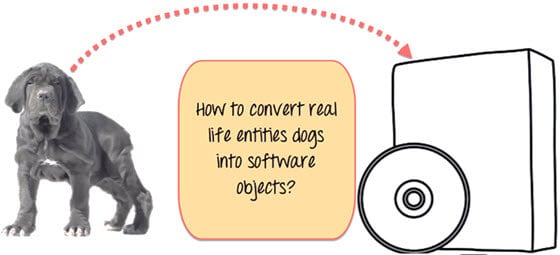
Moreover, the million dollar question is, how you design such software? Here is the solution-
First, let's do an exercise.
You can see the picture of three different breeds of dogs below.
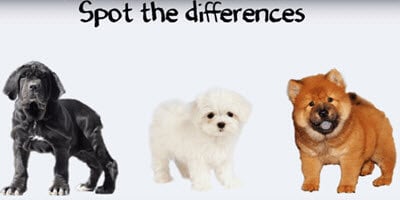
Stop here right now! List down the differences between them.
Some of the differences you might have listed out maybe breed, age, size, color, etc. If you think for a minute, these differences are also some common characteristics shared by these dogs. These characteristics (breed, age, size, color) can form a data members for your object.
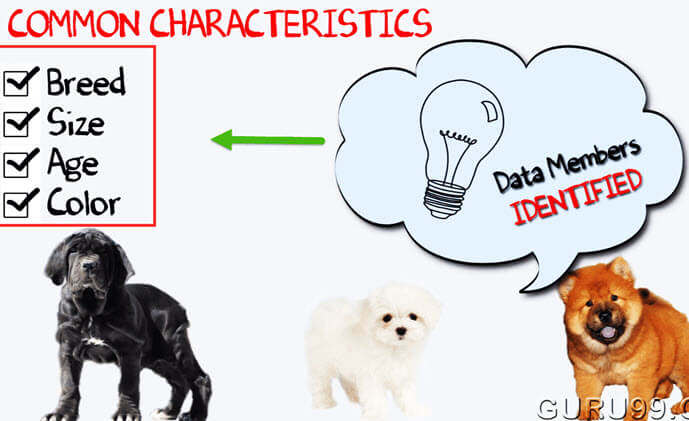
Next, list out the common behaviors of these dogs like sleep, sit, eat, etc. So these will be the actions of our software objects.
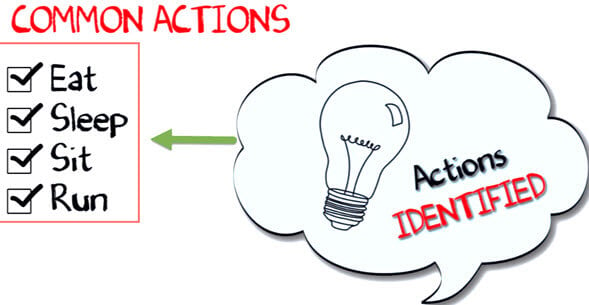
So far we have defined following things,
- Class - Dogs
- Data members or objects- size, age, color, breed, etc.
- Methods- eat, sleep, sit and run.
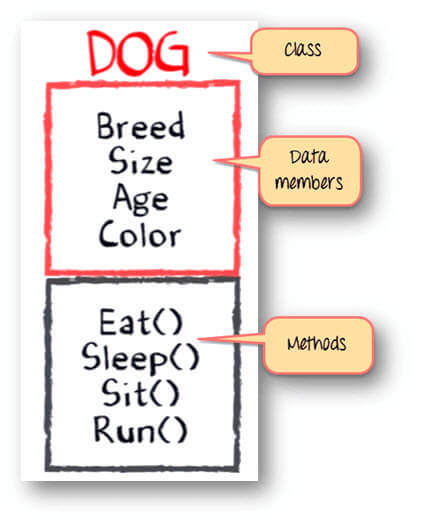
Now, for different values of data members (breed size, age, and color) in Java class, you will get different dog objects.
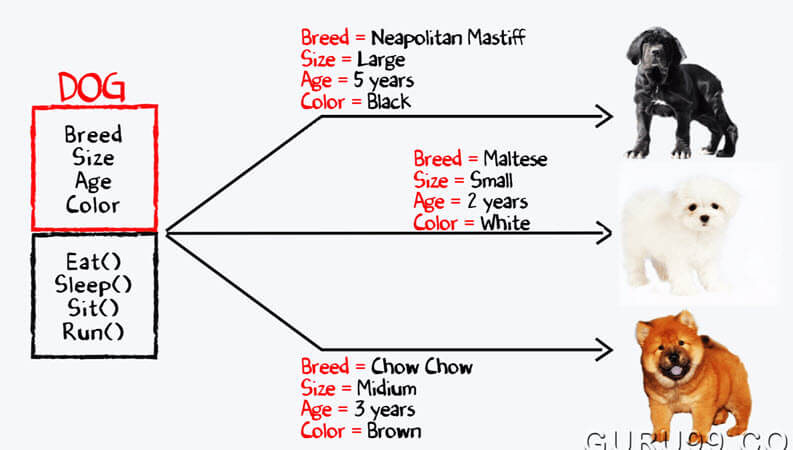
You can design any program using this OOPs approach.
While creating a class, one must follow the following principles.
- Single Responsibility Principle (SRP)- A class should have only one reason to change
- Open Closed Responsibility (OCP)- It should be able to extend any classes without modifying it
- Liskov Substitution Responsibility (LSR)- Derived classes must be substitutable for their base classes
- Dependency Inversion Principle (DIP)- Depend on abstraction and not on concretions
- Interface Segregation Principle (ISP)- Prepare fine grained interfaces that are client specific.
Example Code: Class and Object
// Class Declaration
public class Dog {
// Instance Variables
String breed;
String size;
int age;
String color;
// method 1
public String getInfo() {
return ("Breed is: "+breed+" Size is:"+size+" Age is:"+age+" color is: "+color);
}
public static void main(String[] args) {
Dog maltese = new Dog();
maltese.breed="Maltese";
maltese.size="Small";
maltese.age=2;
maltese.color="white";
System.out.println(maltese.getInfo());
}
}
Output:Breed is: Maltese Size is:Small Age is:2 color is: white
Object and Class Example: main outside class
In previous program, we are creating main() method inside the class. Now, we create classes and define main() method in another class. This is a better way than previous one.
// Class Declaration
class Dog {
// Instance Variables
String breed;
String size;
int age;
String color;
// method 1
public String getInfo() {
return ("Breed is: "+breed+" Size is:"+size+" Age is:"+age+" color is: "+color);
}
}
public class Execute{
public static void main(String[] args) {
Dog maltese = new Dog();
maltese.breed="Maltese";
maltese.size="Small";
maltese.age=2;
maltese.color="white";
System.out.println(maltese.getInfo());
}
}
Output:
Breed is: Maltese Size is:Small Age is:2 color is: white
Summary:
- Java Class is an entity that determines how an object will behave and what the object will contain
- A Java object is a self-contained component which consists of methods and properties to make certain type of data useful
- A class system allows the program to define a new class (derived class) in terms of an existing class (superclass) by using a technique like inheritance, overriding and augmenting.

No comments:
Post a Comment